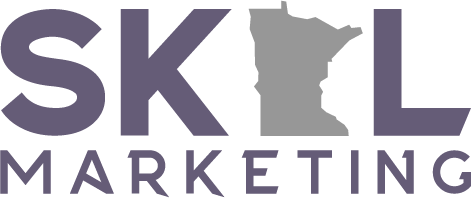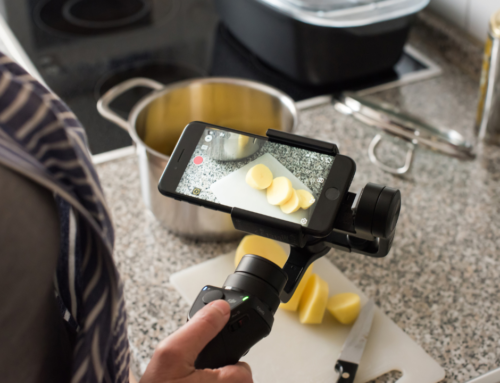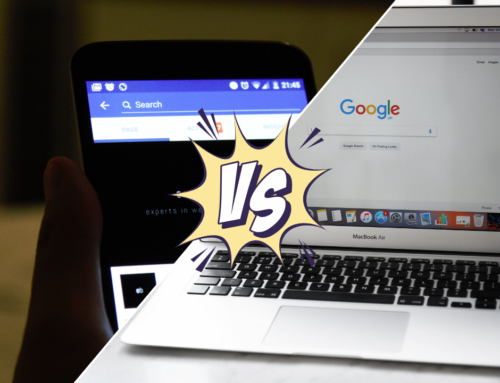When business owners and operators first dip their toes into real, intentional social media marketing, one of the inevitable first questions to come up is about the difference between organic and paid social media content. First of all, if you find yourself asking this question, don’t feel embarrassed–it may seem rudimentary, but it’s a necessary distinction to understand and it’s something any social media campaign creator will quickly learn. So what is the difference between organic and paid? What do the terms “organic” and “paid” mean? What are the pros and cons of organic vs paid social media content?
What is Organic Social Media Content?
Organic social media content is, simply put, any social media content for which you haven’t paid to extend the reach. It could be text, images, video, etc–as long as you haven’t used the social media platform’s paid advertising tools to create or boost your content, that content is considered organic. A good example of organic content is when you do a post on your personal profile outside of work: because you haven’t used any business tools to pay to run it, that makes it all organic, and the same concept applies to your business page and posts then. If all you’ve done is drafted a post and hit “publish” without putting any money behind it, that content is organic. An easy way to think of it is this: all the content you post on your personal profile outside of work is organic content because you haven’t used any of the business tools to pay to run it. While social media algorithms are constantly changing (Facebook, in particular, is notorious for constantly tweaking its algorithm), the following are a few common factors to consider for maximizing the reach of organic social media content:
Quality of content: The better and more enticing the content you post, the more people will likely see it. A retail shop that posts a text-only Facebook status update that just says “we’re open” will likely see lower reach than posting fun and a detailed video of staff welcoming guests into the now-open store.
Relevancy: This boils down to making sure you post things your audience cares about. If you’re a digital business with customers spread all over the world, sharing a Facebook event for an ice cream social at the park nearby might not be relevant. But if you’re a local shop in a small town, that same post might be very relevant indeed.
Engagement: The more people engage with a piece of content (by liking/reacting, commenting, or sharing), the more that content will spread. This is why we tend to see popular posts “snowball” into increasing popularity over time.
Timing: There’s plenty of evidence that suggests certain times and days work best for capturing your audience’s attention, but it’s not an exact science that works the same for everyone. Checking your analytics to see when your audience is online will give you a way to schedule the best times for your company.
The Pros and Cons of Organic Content
The pros of focusing on organic content are mainly cost and authenticity. Cost is clear: posting content without using a platform’s paid tools means you aren’t sinking any money into your social media strategy outside of the time and labor it takes to do the work. Authenticity is the other major benefit of organic posting. Because social media was built as a way to connect with friends, family, and people with common interests, brands are usually considered “outsiders” to the users of these platforms. Users tend to trust organic content and are warier of posts that are labeled “sponsored” (meaning paid).
The major con of relying on organic social content is that–to be blunt–social media companies would prefer you pay them, and tweak their algorithms to funnel you towards their paid tools. An average organic Facebook post only reaches 5.2% of the page’s audience, and that number has been trending downwards for years. High-performing organic content is the holy grail of any company with a social media presence, but that goal can be remarkably difficult to achieve.
What is Paid Social Media Content?
Paid social media content is any content created in (or boosted by) a social media platform’s paid advertising tools. Generally speaking, these tools (such as Ads Manager for Facebook/Instagram and Twitter Ads) are offered to platform users with business pages or business accounts and allow you to run ads of your own design, at your own budget, targeted to a specific audience that you help define. We’ve written before on how to run effective Facebook ads (and that knowledge is largely applicable across other platforms) so we won’t dive into all the details here, but one thing we will add is that almost any Facebook post can be turned into a paid advertisement after posting: Facebook has the option to “boost” organic posts by putting money behind them and (hopefully) increasing their reach.
Typically, the best practices for creating social ads are slightly different than creating organic content. While organic content tends to be most successful when it connects with an audience rather than making a hard sell, paid advertisements are a bit more traditional–make straightforward, attractive promotional content with a clear and succinct call to action. Having said that, the algorithm still affects paid content, so keep in mind what we said about quality, relevancy, engagement, and timing.
The Pros and Cons of Paid Content
The biggest pro of putting money behind social media content is that it allows you to take advantage of tools designed as a shortcut around the organic reach game. Investing in paid social advertisements allows you to bypass the organic growth process and get immediate eyes and engagement on your content. Paid ads also give you access to a wealth of micro-targeting options to find your perfect audience and turn engagement into actual conversions, as well as offering in-depth analytics to track exactly how every piece of content is performing. The cons? Well, that’s easy–you have to pay to run these ads!
Should I Focus on Paid Ads or Organic Content?
This has been a lot of information, so here’s a quick refresher summary of each strategy:
Organic Social Content:
+ Easy to get started; you’re probably already doing it!
+ No additional up-front costs
+ Quality organic content can attract the most genuine interest
– Algorithm can work against you
– Can require lots of labor/time to make high-quality content
Paid Social Advertisements:
+ Helps you easily reach more users
+ Allows you to micro-target the users you want to reach
+ Lots of analytics to utilize
– Requires additional budget than just time and labor
– May appear less authentic to your users and fan
Of course, the question “what should I focus on” may not actually be the question you want to ask. The truth is, lots of highly successful companies utilize a social media strategy that incorporates both options. Some focus on fun organic content to build a fanbase, then use paid ads to increase conversion. Some businesses will run primarily organic content, then put money into the most successful organic posts to supercharge their reach and engagement. If this sounds overwhelming, Skol Marketing is here to help bring it all into focus to guide your business to success. If you’d prefer one-on-one guidance or would like to discuss how our assistance can help you define your social media strategy, please don’t hesitate to contact the local social media experts at Skol Marketing.







